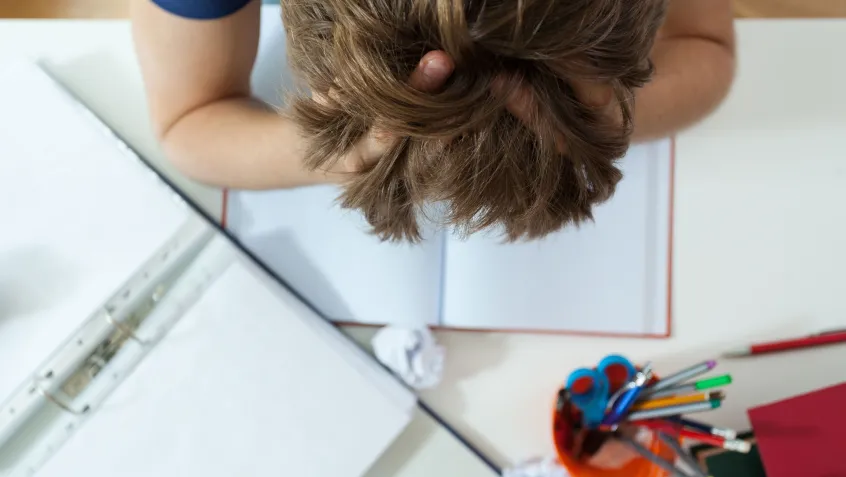
With tests and exams approaching, you may notice your students (or your child) experiencing feelings of nervousness. Exams can be stressful and it can be hard to keep stress levels down. A little preparation and few de-stressing techniques can make all the difference in your students' performance.
Here are a few of the ways for students (and teachers) to de-stress before and after tests:
Spend some time outdoors. Arranging an outside lunch or a 10-minute walk for your classroom can make all the difference when it comes to dealing with test anxiety. Allowing students to spend more time outside can actually help boost test scores and help students perform better. If you don't have access to the outdoors, displaying outdoor images on a TV or computer monitor serves as a good replacement.
Encourage students to write everything down. Writing down concerns and anxieties allows students to express them in a healthy manner instead of keeping them bottled up. Be sure to explain why writing helps. Routine journaling works best. Feel free to look up some writing prompts for building self-esteem and confidence. You can encourage elementary school students to draw their feelings. After they are finished, have them crumple up the drawing and throw it away, explaining they are throwing away those negative feelings.
Practice mindfulness. Teaching students to practice mindfulness can help them deal with stress in and out of the classroom. Test anxiety can start as early as second grade and will only increase as students get older unless it is addressed. Here are a few exercises for students of different age groups. (It's best to practice mindfulness regularly and not just during stressful times).
- For elementary school students: Practice deep breathing exercises. Have the students take a deep breath and then breath through the nose and then slowly, breathe out. Remind them to pay attention to how their stomach and chest move in and out.
- For middle school students: Teach them how to stretch. It may sound simple, but teaching students how to stretch correctly can relieve tension and help their bodies relax
- Start with a good neck stretch: place your hands behind your back, grasping your right wrist with your left hand. Use your left hand to gently straighten your right arm, pulling it slightly. Lower your left ear toward your shoulder and hold for 30 seconds. Switch to the other side and repeat with your left wrist and right hand.
- For high school students: Practice progressive muscle relaxation. While sitting in their chairs, instruct students to rest their hands in their laps and take a few slow, even breaths.
- Guide them to focus on specific parts of their bodies, tightening each for 15 seconds and then slowly releasing for 30 seconds, making sure to leave the other parts of the body relaxed. They should notice the difference in how their muscles feel and the sensation of relaxation.
Conduct the exercise in the following order:
- Guide them to focus on specific parts of their bodies, tightening each for 15 seconds and then slowly releasing for 30 seconds, making sure to leave the other parts of the body relaxed. They should notice the difference in how their muscles feel and the sensation of relaxation.
- Forehead - Tighten, hold, and then release.
- Jaw - Tighten, hold, and then release.
- Neck and shoulders - Raise shoulders to the ears, hold, and then release.
- Arms and hands - Draw hands into fists and draw into the chest squeezing, hold, then release.
- Legs - Tighten the quadriceps and calves, hold, then release.
SOURCES:
- Christiansen, Malene Sommer. "Recess Improves Student Performance." Sciencenordic.com. March 17, 2016. Accessed March 22, 2019. http://sciencenordic.com/recess-improves-student-performance.
- Koebele, Jennifer. "Stress Management in School: Tips for Parents, Teachers, & Students." AccreditedSchoolsOnline.org. November 28, 2018. Accessed March 22, 2019. https://www.accreditedschoolsonline.org/resources/student-stress/.


